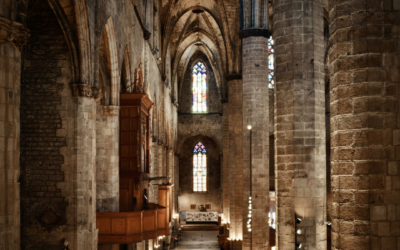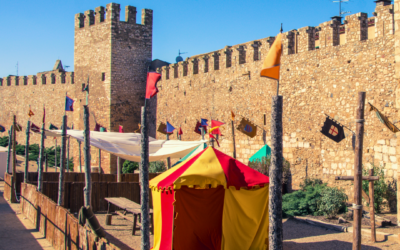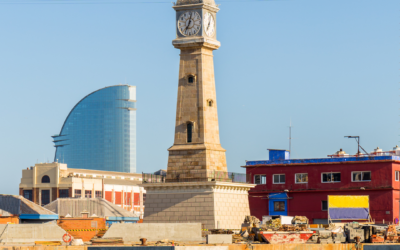From the creators of the strangest Catalan traditions spread throughout Catalonia such as the “cagatió” and the “castellers”, we present you one more, the Calçotada. The essentials to make this great meal a success is good weather in the open air, family or friends, a drink and the desire to get your hands dirty. Keep reading this post to find out what a Calçotada is, its origins and how it is celebrated on the Costa Dorada.
Have we caught your attention and you want to visit Tarragona, Valls, Reus, La Pineda, Salou or Cambrils to try calçots? Shuttle2Sun offers shuttle transfer services and private transfer services to enjoy this popular food.
What is a calçot?
The calçot is one of the many typical foods on the Costa Dorada and a symbol of Catalan gastronomy, consisting of a white onion that originates from the region of Valls, Tarragona. Its unique elongated shape is due to its different way of cultivation as it is wedged with more soil. In Catalan, calzar is translated as “calçar” (to wedge), which is the origin of this curious food. Today, it has spread throughout Catalonia, in some provinces of Spain and even outside the country. France, Belgium and Germany are some of the countries where calçots are exported and enjoy this Catalan food.
The calçot, being practically an onion, has many beneficial health properties. It is an ingredient rich in vitamins and minerals, such as iron, zinc, phosphorus and potassium. They also have properties that aid digestion.
The calçot season is between November and April, with the last Sunday in January being the high point, as the Calçotada Festival is held in Valls.
Origin
Legend has it that the origin of the calçots is due to the “Xat de Benaies“, a famous farmer who lived in the town of Valls at the end of the 19th century. This farmer decided to try to make the most of the old onions he was going to throw away, so he peeled them, threw them into the fire and, to his surprise, discovered that the inside was not fibrous and had a very sweet taste. This discovery spread to all the houses in the region, then throughout the province of Tarragona and Baix Camp region, and its popularity grew exponentially.

This is the most established origin for this food, but the truth is that in the town of Brigetio, Hungary, a painting was found dating from the 3rd century, in Roman times, showing a local man eating a “porrus capitatus“, a calçot. After a study of the painting, the archaeologist László Borhy stated that what the protagonist was holding in the painting was a calçot, and there are many other references in Latin literature in which it appears that the Romans already used this food in dishes.
We leave it up to you to believe in the origin that most convinces you, but what you cannot deny is how delicious this food is and the fun process of cooking it.
Salvitxada and its accompaniments
Calçots would have a very different flavour and perhaps would not be as successful as they are now if it were not for the sauce that accompanies them, the Salvitxada, and perhaps the great forgotten. It is very similar to romesco sauce in its preparation as it includes ñora, ripe tomatoes, garlic, olive oil, almonds, stale bread and a little parsley.
And that’s not all, it is common to accompany the main dish with grilled meat, including lamb, artichokes, roasted potatoes, white beans and any other food that is considered appropriate.
Finally, by tradition, the dessert that culminates this delicious meal is crema catalana, as it could not be otherwise. We may need a whole article to explain this dessert, but we can tell you in advance that it is delicious.
The process of the Calçotada and its preparation
Calçots are like paella, each person’s taste is different due to the mystery of the preparation process. Water, sun and climate are fundamental factors for the success of the result, although around the towns of Tarragona and Baix Camp they will surely tell you that it is dedication and love.
To cook them, a good wood fire is needed and, when they are completely black on the outside, they are removed from the grill and then wrapped in newspaper so that they do not get cold when they are eaten. They are then served on a tile with the accompanying sauce.
Once the calçots are cooked, the meat and any other ingredients are placed on the grill to cook slowly. Finally, the crema catalana is served as a dessert to round off the meal.
The procedure for eating the calçots is a lot of fun. It starts with putting on a bib, as for a Calçotada to be good, you will have to end up with black fingers due to the blackening of the outer layers. Once prepared, take the calçot by the upper end of its leaves, remove the burnt part of the skin with the other hand and, soaked in sauce, lift it up to the top and then put it in your mouth to enjoy its flavour.
If you don’t have a place in the open air for the Calçotada, don’t worry! Many restaurants take advantage of this high season and offer calçotadas in their establishments. We recommend any restaurant in Valls, the town in Tarragona, where calçots originate. For example, Cal Ganxo is a specialised place that only offers Calçotadas, accompanied with lamb, sausage and black sausage.
Now you know how to enjoy the Calçotada in the traditional way as a good Catalan would do. Don’t wait any longer and book your transfer to the Costa Dorada with transfers from Barcelona airport, Barcelona port, Reus airport or the AVE Camp de Tarragona train station. Enjoy!



